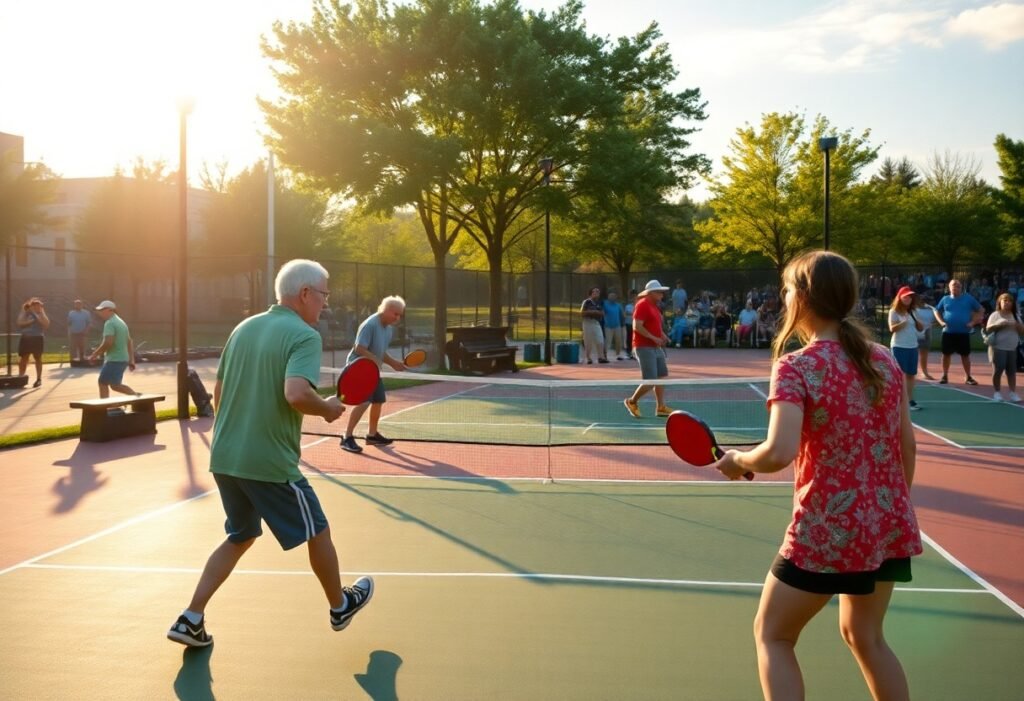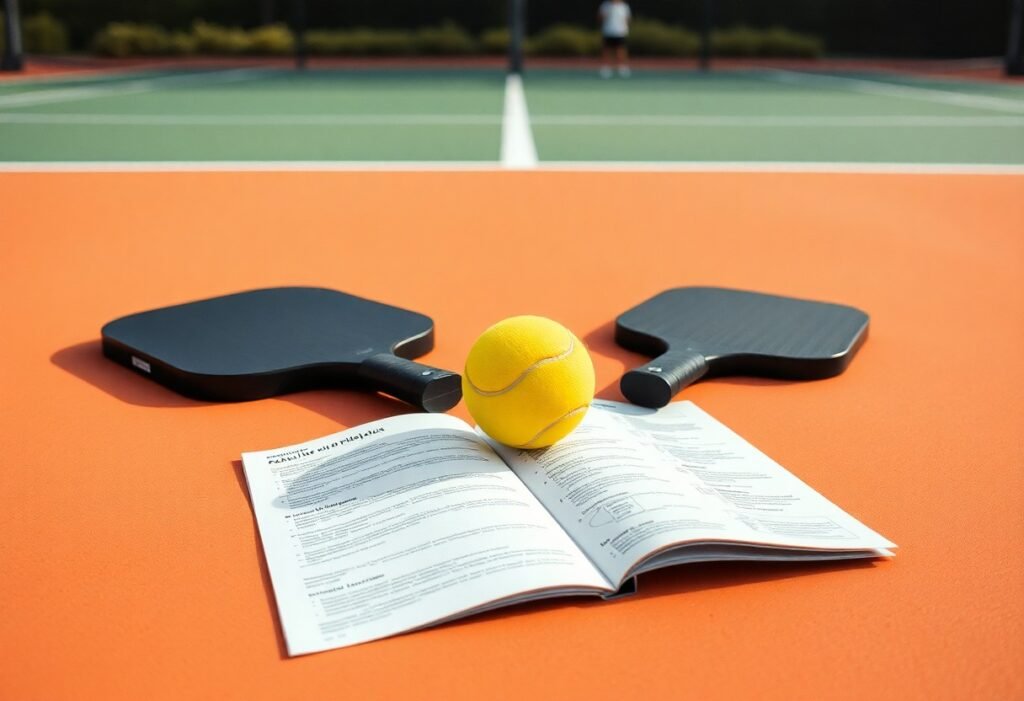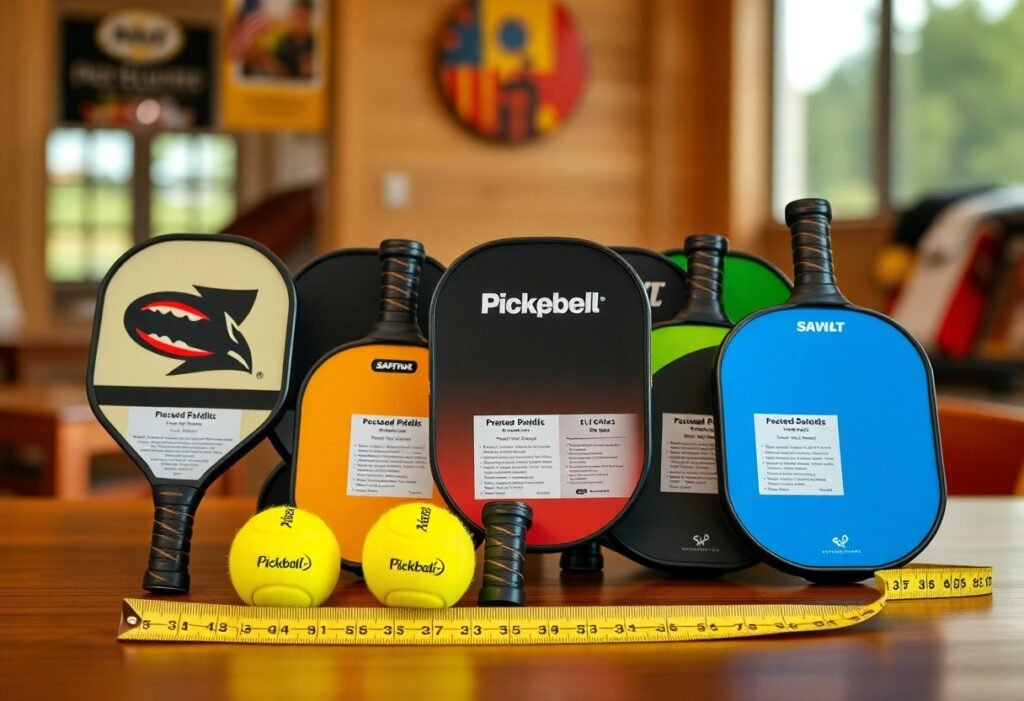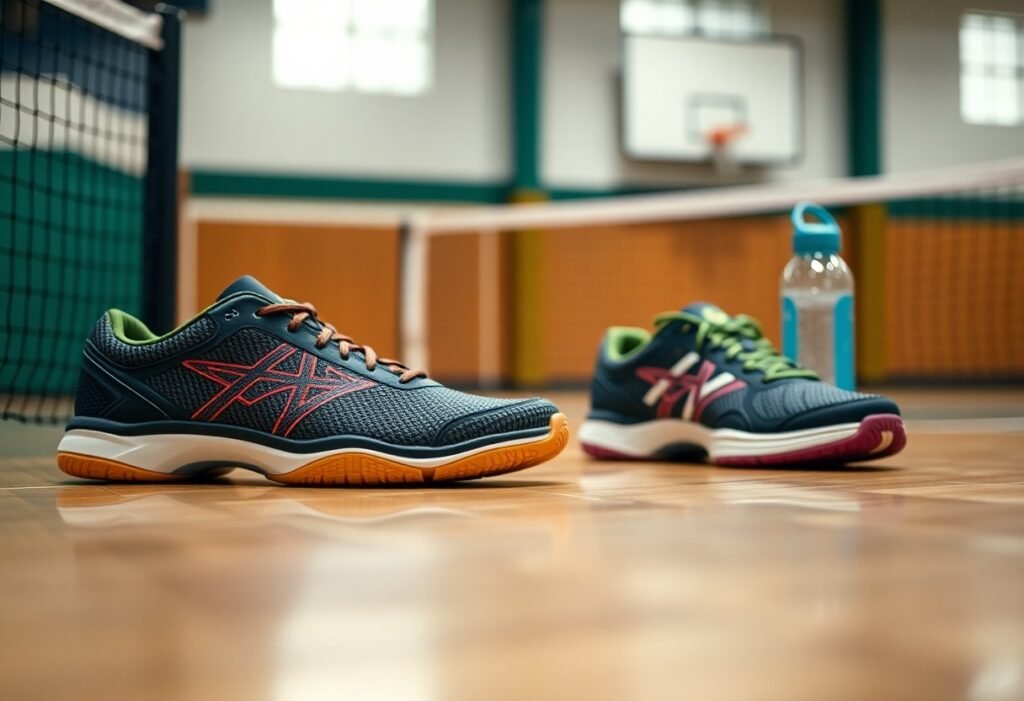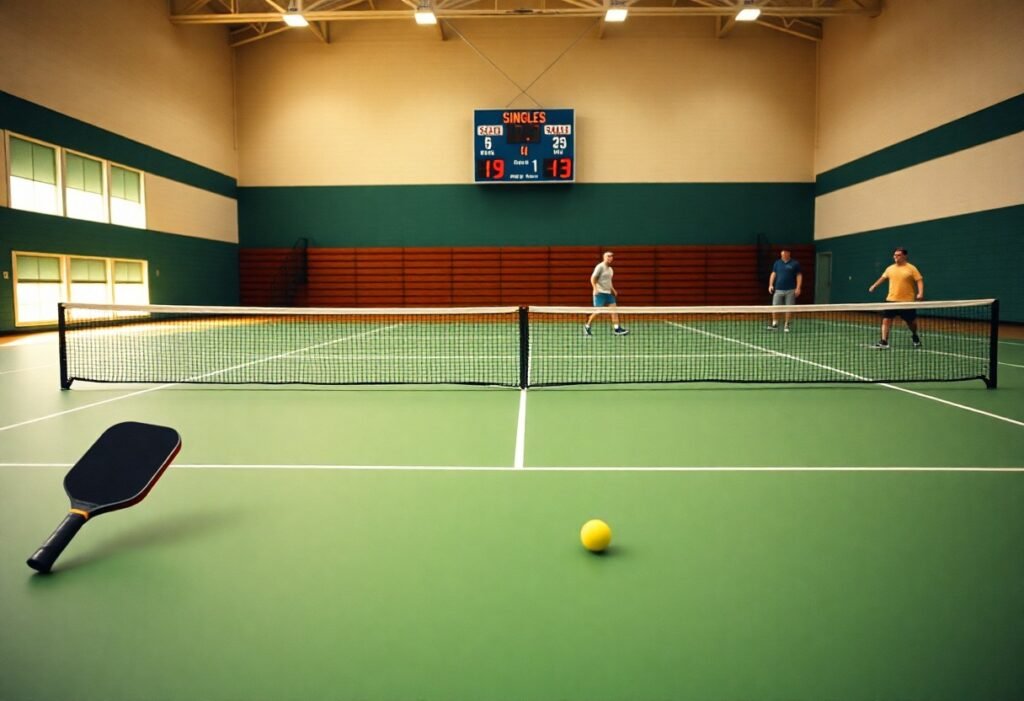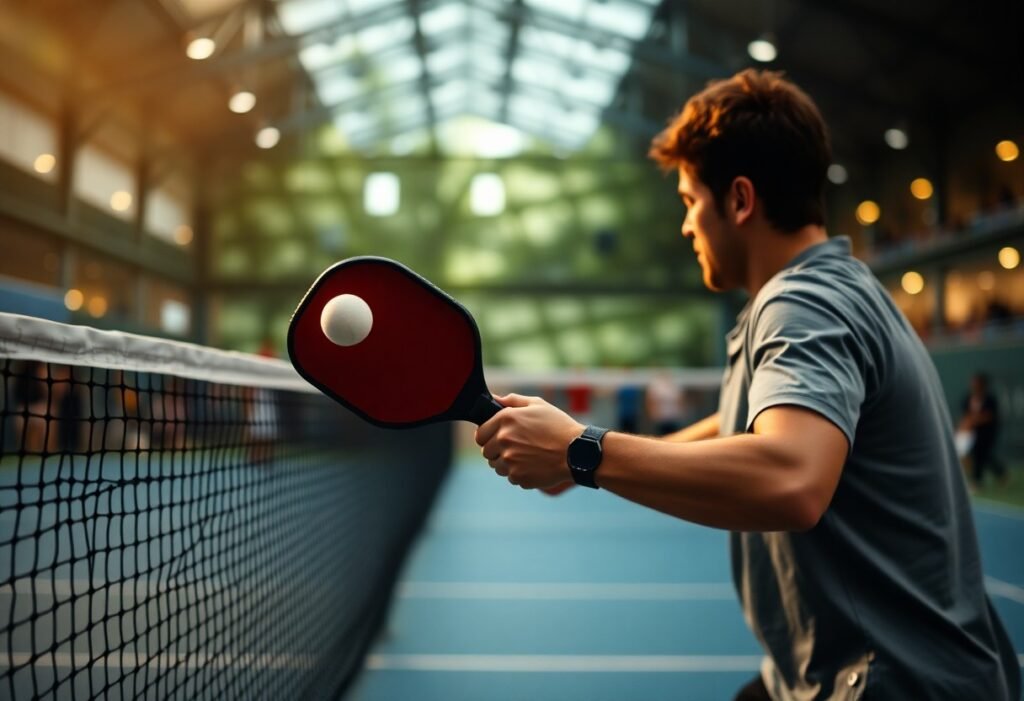Most players overlook the importance of understanding pickleball serve rules, which can significantly impact your game. Knowing the difference between legal and illegal serves ensures you avoid faults and penalties during matches, allowing for a fair and enjoyable experience. This post will clarify the distinct aspects of serves, including the proper technique and positioning required for a successful serve. By mastering these rules, you can elevate your performance and enhance your strategic gameplay.
Key Takeaways:
- The serve must be made underhand, with the paddle contacting the ball below the waist level.
- The ball must be served diagonally to the opponent’s service court, clearing the non-volley zone.
- A serve is illegal if it bounces before reaching the opponent’s service box or if the server steps on or over the baseline during the serve.

Understanding Pickleball Serves
Definition of a Serve
A serve in pickleball is the initial shot executed to start a point. You must hit the ball diagonally across the net into the opponent’s service court, ensuring the ball clears the non-volley zone (also known as the kitchen) without bouncing in it first. The serve is typically executed underhand, with the paddle making contact below your waist.
Importance of Serving in Pickleball
The serve is foundational to your strategy and overall game performance. A strong serve puts your opponent on the defensive and can set the tone for the entire rally. By focusing on your serve’s placement, speed, and spin, you can gain an immediate advantage, making it imperative to master this skill.
Think about how a well-executed serve can dictate the pace of play. When you place your serve strategically to target weaknesses in your opponent’s positioning, you can increase your chances of winning the point. Additionally, a consistent and varied serving style—mixing up speed and spin—keeps your opponent guessing and can diminish their ability to return effectively. Strong services can lead to immediate points or advantageous returns that create further scoring opportunities, establishing the serve as a powerful asset in your game strategy.
Basic Rules for Serving
Serving Position
Your serving position is vital for a legal serve. Stand behind the baseline and within the sideline extensions. You must have at least one foot behind the baseline when you strike the ball, ensuring that you don’t step over the line prematurely, which could lead to a fault.
Serving Height Requirements
The ball must be struck below your waist and must not exceed a certain height for legality. Specifically, the paddle must contact the ball at or below your navel. This height requirement maintains fairness in the game by promoting consistent serve techniques among players.
Ensuring that the paddle hits the ball below your waist helps in keeping the serves from becoming overly aggressive. For your serves, practice this height by using a tape measure; aiming for approximately 36 inches from the ground can aid in achieving the correct striking point.
Foot Faults
Foot faults occur when you step on or over the baseline during your serve. This is a common mistake, often happening when you’re eager to deliver a strong serve. You must stay behind the baseline until the ball has been struck, or you risk losing the point.
Be mindful of your foot positioning as you prepare to serve. It’s helpful to practice your stance to develop muscle memory, allowing you to focus on your serve mechanics rather than your foot placement. Even a slight shift can cause a foot fault, so make a habit of checking your alignment before each serve.
Legal Serves
In pickleball, understanding the rules surrounding legal serves is important for a successful game. Your serve must adhere to specific guidelines to ensure it’s valid. Check out more on Legal or Illegal Pickleball Serve? What say You? for detailed insights.
The Underhand Serve
The underhand serve is one of the most common and easiest serves to perform. You must strike the ball below your waist, and the paddle must be moving upward when making contact. This technique allows for more control and placement, making it a preferred choice for many players.
The Overhand Serve
The overhand serve, while more challenging, can be a powerful weapon in your serving arsenal. You need to hit the ball above your waist and ensure that your paddle contact is smooth and controlled to maintain accuracy. This serve can intimidate opponents when executed correctly.
When performing an overhand serve, focus on your technique. A strong toss combined with a fluid swing will create the momentum needed for effective power and precision. The ball can be struck at various angles, allowing you to target specific areas of the court for maximum impact.
Spin Serve
A spin serve adds an extra layer of difficulty for your opponent by altering the ball’s trajectory after contact. By imparting topspin or backspin, you change how the ball behaves upon bouncing, making it harder to predict and handle.
To execute a successful spin serve, angle your paddle slightly and adjust your wrist motion at contact. Mastering this technique not only increases the unpredictability of your serves but also improves your overall serving strategy, keeping your opponents on their toes.
Serve Velocity and Trajectory
The velocity and trajectory of your serve are important components of its effectiveness. A fast, well-placed serve can give your opponent little time to react, giving you an advantage from the start of the point.
Varying the speed and angle of your serves can keep your opponents guessing. While a strong serve can set the tone, softer, well-placed shots can create opportunities for strategic plays. Pay attention to your opponent’s strengths and weaknesses to adapt your serving strategy accordingly.
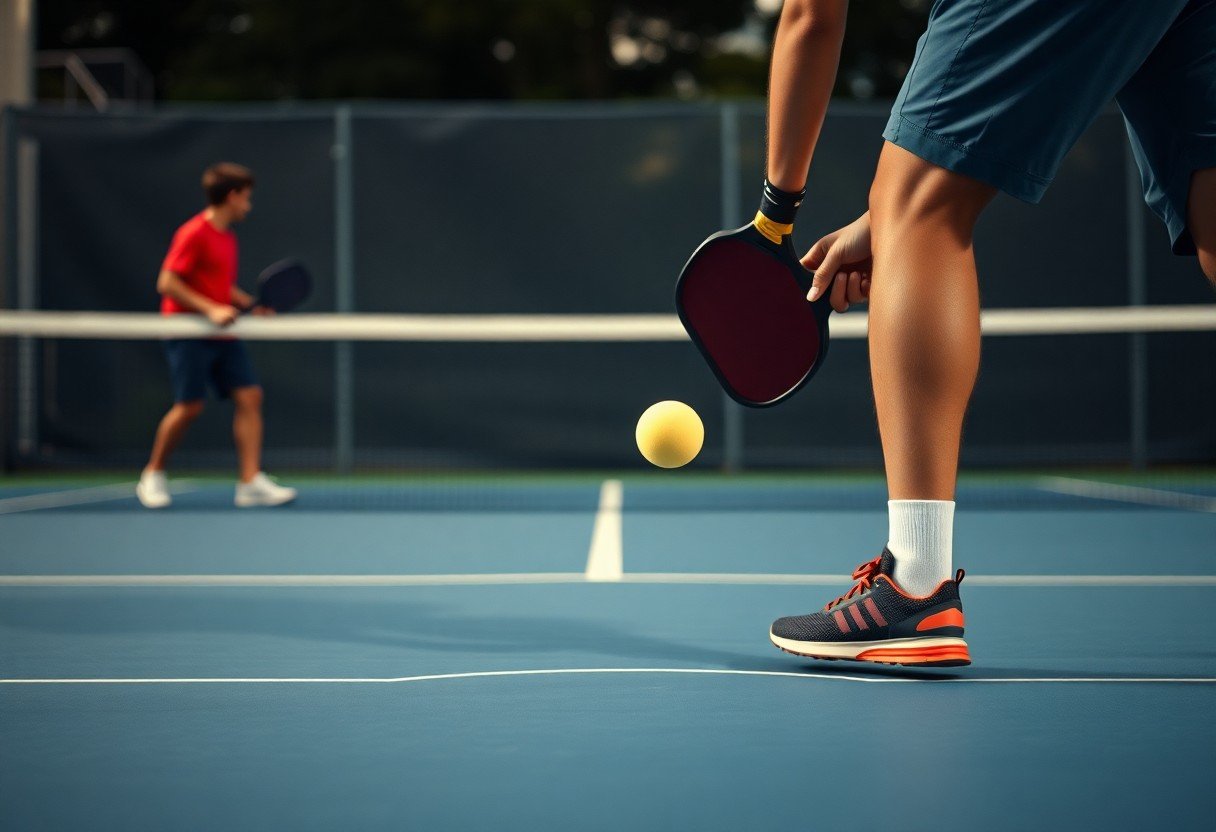
Illegal Serves
High Toss Serves
In pickleball, a high toss serve occurs when you release the ball too high before striking it. Serves must be hit below your waist, which means tossing the ball significantly above this point is illegal. Maintain control and aim for a consistent, lower toss to ensure compliance with serving rules.
Tossing the Ball with Both Hands
When serving, use only one hand to toss the ball. Using both hands to toss the ball is considered an illegal serve. Stick to a simple one-handed tossing technique to avoid potential faults during your serve.
Utilizing both hands creates inconsistency and can lead to errors in your serve. By focusing on a single-handed toss, you enhance your precision and control, which are key for a legal serve.
Hits Above the Waist
Your serve must be made when the ball is below your waist. Hitting the ball above this height is classified as an illegal serve, meaning you forfeit your opportunity to serve. Keep your strike low for compliance with the rules.
Striking the ball above the waist not only constitutes an illegal serve but also diminishes your effectiveness on the court. Adopting a technique that consistently engages the ball below waist level is vital for successful gameplay. It enables you to execute serves that can catch your opponent off-guard while adhering to the official regulations.
Failing to Clear the Non-Volley Zone
The serve must completely clear the non-volley zone, which extends 7 feet from the net on both sides. Failing to clear this area results in an illegal serve, giving your opponent an advantage. Ensure your serve travels beyond the non-volley zone to maintain its legality.
Not clearing the non-volley zone can lead to easy returns from your opponent, undermining your strategic advantage. Focus on targeting the deeper areas of the court during your serve, as this will not only satisfy the legal requirement but also create a more challenging return for your opponent.
Special Circumstances
Serving from the Wheelchair
If you are serving from a wheelchair, specific adaptations apply. You must remain seated during the serve, and your serve must still comply with the basic rules—make contact below the waist, hit the ball diagonally into the opponent’s service area, and ensure that the ball doesn’t bounce before hitting it. Additional considerations might include the positioning during the serve, ensuring safety and fairness on the court.
Serving for Beginners
As a beginner, honing your serve is fundamental for improving your game. Start by practicing the basic serve mechanics: keeping your stance stable, focusing on your grip, and maintaining proper follow-through. A consistent practice routine can significantly enhance your confidence and accuracy on the court.
Begin with the underhand serve, which allows you to generate a consistent toss and develop your control. Aim for a high, arching trajectory to make it difficult for your opponents to return. Gradually incorporate the overhand serve as you gain confidence. Experiment with angle and spin, adjusting your body positioning for various serves. Track your progress, and consider joining group practices or lessons to refine your skills through diverse feedback.

Common Mistakes and Misinterpretations
Misunderstanding the Non-Volley Zone
Many players misinterpret the non-volley zone rules, particularly regarding when and how they can enter this area. You cannot step into the non-volley zone before the ball bounces, leading to possible faults if you do so while attempting a volley. Even if you’re out of bounds during your serve, be cautious; any part of your foot touching the zone can result in an illegal serve.
Misinterpreting Serve Rules in Doubles
In doubles, improper understanding of the serve rules can lead to costly mistakes. Each player on the serving team rotates serving, and the order of service must be maintained. If you serve out of turn, your team loses the point, which can be frustrating. Knowing when it’s your turn and placing your serves accurately is necessary to maintaining momentum and winning.
Correctly interpreting serve rules in doubles also involves understanding that only one player from each team serves per round, and the serve must be diagonal across the court. If you fail to serve to the correct box or don’t wait for your partner’s signal, your serve becomes invalid. Pay attention to the scoreboard and the serving sequence to avoid losing points needlessly due to a simple mix-up.
Final Words
The understanding of pickleball serve rules is imperative for your success on the court. By familiarizing yourself with what constitutes legal and illegal serves, you can enhance your gameplay and avoid unnecessary faults. Pay attention to details such as the service motion, ball release height, and contact point to ensure each serve adheres to the regulations. Mastering these rules not only improves your skills but also elevates the overall enjoyment of the game.
FAQ
Q: What is a legal pickleball serve?
A: A legal pickleball serve must be made underhand, with the paddle contacting the ball below the waist. The server must stand behind the baseline and hit the ball diagonally into the opponent’s service court. The server cannot step on or over the baseline prior to hitting the ball.
Q: Are there specific height requirements for a serve?
A: Yes, during a legal serve, the ball must be hit on the upward trajectory. The server must strike the ball at or below the waist level, defined as the navel for a player standing in a ready position. Hitting the ball above the waist results in an illegal serve.
Q: Can players use any type of paddle for serving?
A: Players must use a pickleball paddle that meets official specifications, which includes having a flat surface and a certain weight. Using an illegal paddle may result in the serve being deemed illegal.
Q: What constitutes an illegal serve in pickleball?
A: An illegal serve can occur when the paddle strikes the ball above the waist, if a player steps on or over the baseline before the ball is hit, or if the serve is made to the wrong service court. Additionally, if the ball does not clear the net or lands outside the designated service area, it is also illegal.
Q: How does the server’s position affect the legality of a serve?
A: The server must remain behind the baseline and within the imaginary extension of the sideline until the ball is hit. If the server steps on or over the baseline before making contact, the serve is considered illegal. Proper positioning is important for an effective and legal serve.



